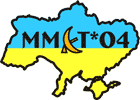 |
IEEE AP/MTT/ED/AES/GRS/NPS/EMB Societies East Ukraine Joint Chapter National Academy of Sciences Scientific Council on Radio Physics & Microwave Electronics |
|
|
|
||
| Overview | Topics | Deadlines | Papers | Downloads | Hot Links |
|
|
by Radovan ZentnerE-mail: radovan.zentner@fer.hr (from IEEE Antennas and Propagation Magazine, V.40, N3, July 1998, pp.79-80)
I experienced
an exceptional combination of warm hospitality,
friendship, and mathematics this June, as I attended
the Seventh International Conference on Mathematical
Methods in Electromagnetics (MMET*98), held in
Kharkov, Ukraine, June 2-5, 1998. A small group
of us, arriving by direct flight from Vienna,
were almost scared away, when asked to fill out
customs forms inherited from the Soviet
times. Fortunately, friendly customs officials,
in spite of a limited knowledge of English, eliminated
our apprehension, and showed us that changes have
happened, here.
The city of
Kharkov, located in the East Ukrainian steppe
region with a population of two million, is an
important center of science and education. Its
State University, founded in 1805 by imperial
decree, is highly reputed in mathematical and
physical sciences.
The concept
of the MMET symposia - held since 1988, at first
as a meeting of young soviet scientists - is to
organize a gathering of Westerners involved in
electromagnetics with their colleagues from the
FSU (former Soviet Union). Previous MMET gatherings
took place in other parts of Ukraine, e.g., in
Alushta and Gurzuf on the Black Sea coast of the
Crimean peninsula; in Kharkov; and in the city
of Lviv.
MMET*98 was organized by professor Eldar Veliev, from the Institute of Radiophysics and Electronics, National Academy of Sciences (IRE NAS), Kharkov. The technical program Committee was co-chaired by Professor Alexander Nosich, from IRE NAS, and Dr. W. Ross Stone from the IEEE AP-S (and Alex Nosich must be given all of the credit-WRS). The committee included well-known and respected members of the international electromagnetics community. There were many organizations supporting the event, including the Ukrainian IEEE AP/MTT/ED/AES-SS Joint Chapter, the Institute of Radiophysics and Electronics and the Institute of radio Astronomy of the Ukrainian Academy of Sciences, the International Association of Geomagnetism and Aeronomy, the USAF European Office of Aerospace R&D, and the US Office of Naval Research European Office. The contributed
papers were presented in English (the working
language since 1990), in four parallel whole-day
sessions, with the following topics:
Apart from the exchange of information during the sessions, MMET offered a dense social program, which enabled more contacts between the participants. This included the very interesting city tour, in a "historical" bus from the 60s, a genuine Ukrainian product from the bus factory of Lviv. It is also included the conference banquet, which ended in a lively atmosphere of Ukrainian dances and Ukrainian vodka. Another event was the picturesque theater performance of Giovanni Boccaccio's "Decameron", with the cast of puppets and actors, organized exclusively for the conference participants. The summary of the symposium was at the barbecue party, in one of the many parks of Kharkov, where a soccer match with European versus Asian participants took place, in an ad hoc improvised field. It was a good overture to the World Soccer Championship in France.
At the closing ceremony of MMET*98, the Young Scientist Awards were announced: First prize:
G.Bit-Babik, Tbilisi State University, Georgia
for "The Method of Auxiliary Sources for Investigation
of Scattered Field Singularities and its Application
for the Inverse Problems" Second prizes: M. B. Tchernyaeva, Nizhny Novgorod State University, Russia, for "Limb-Viewing Refrection Inverse Problem in the Duct Case", and D.A. Kondratenko, Novosibirsk State University, Russia, for "Wave Propagation in Strongly Non-homogeneous Waveguide" Third prizes: M. Gilman, Institute of Problems in Mechanics RAS, Moscow, Russia, for "Averaged Rough Surface Backscattering vs. Bispectral Characteristics of Surface Shape"; D. Y. Chumakov, Institute of Nuclear Problems, Minsk, Belarus, for "Numerical Simulation of Interaction of Shortwave High Laser Pulses with Substance"; and F. Dikmen, Gebze Institute of Technology, Turkey, for "Scalar Wave Diffraction from Infinitely Thin Perfectly Conducting Circular Ring". A special "V. G. Sologub Award for a Remarkable Contribution to the Development of Analytical Regularization Techniques" went to D. Kuryliak, K. Kobayashi, Z. Nazarchuk, and S. Koshikawa (Ukraine and Japan) for the paper entitled "Wiener-Hopf Analysis of Axial Symmetric Diffraction Problems for Open-Ended Cylindrical Waveguide Cavities". The prize for the most-distant travelers of the symposium went to I.B. Yumov from Ulan-Ude, M. V. Tinin from Irkutsk in Eastern Siberia, and to R. Dowden, New Zealand. All the awards included a special liquid supplement: a bottle of fine Crimean rose champagne. This MMET symposium continued with the mission of establishing a communication forum between East and West electromagnetic research engineers and scientists, and encountered increased success. Therefore, I look forward to seeing you at the next MMET, on some day of the year 2000, most probably in Kharkov again. At this point, I would like to congratulate the Organizing Committee on the successful and enjoyable meeting. I also want to thank all of the young scientists from Kharkov State University, who participated in the organization of the event and took care of every problem that might have occurred during the symposium. Radovan Zentner
|
||||||||